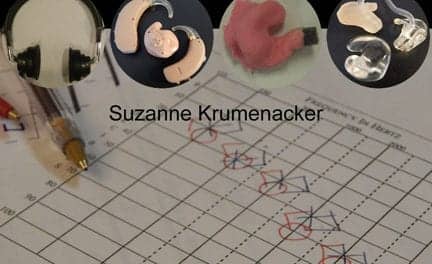Final Word | January 2016 Hearing Review
When I first started working with patients as an audiologist in 1976, I wasn’t yet 30 years old. I grew up in the 1950s. I have no memory of life without television, and always accepted supersonic flight and space travel as routine. As I introduced hearing aids to my 69-year-old first-time buyers, I had to remember that these patients were born in 1906. They had known Civil War veterans, and were too young to have served in World War I! They were deeply affected by the Great Depression of the 1930s. Their purchase decisions were influenced by all of these factors. Further, the jump from the low technology era of horse and buggy transport and woodstoves to advances like small transistor hearing aids was immense.
Today, my 69-year-old patients have similar life experiences to my own. We Baby Boomers are quite diverse and often can’t or won’t adapt to new technology. In 1976 I was probably too inexperienced to appreciate that the patients I was treating at that time were also quite diverse. Nonetheless, then as now, it was my job to find how to match my treatment recommendations with my patients’ life experiences and individual needs so they could assimilate my recommendations and make an informed decision about their hearing care.
Our job as hearing care professionals requires that we are familiar with using computers and online resources. While many 69-year-olds are comfortable with technology, the level of expertise for some does not go beyond apps like Words with Friends and Candy Crush Saga. Recent advances in technology may seem like an enormous jump to many, and their success with the hearing aids we recommend will depend upon how well we match our recommendations with their capabilities or willingness to adapt.
How do we assure that there is an appropriate match? A basic rule for most of us is to make sure that the patient walks out the door with a reasonable chance for success. To that end, we provide training to make sure that the basic steps of inserting a battery and operating any controls we have set up can be accomplished. Depending on the patient, the approach may require a very simple setup to avoid confusion, or a bit more flexibility to allow for manual adjustments such as volume to make adaptation to amplification easier. The determination of whether we have a good match between product and patient often comes as we proceed through the training. If our initial plan is too complex or too simple, we can make changes as we observe the patient. We can’t predict how much new knowledge the patient will retain, but we have to assume that there will be some loss, and plan for that with written reminders and, ideally, customized instruction material. We tend to rely on the patient to call back if they have problems, but a phone call to the patient after 24-48 hours can reinforce concepts and help establish a bond with the new hearing aid user.
Do we attempt to move our patients to a higher level of technical competence? To assure success, it may be necessary to suggest that the patient invest more time in the process to become competent in manipulating, adjusting, or cleaning the hearing aids. There are some patients who do not have the will or capability to change, and we need to compromise to offer the best chance for success within the scope of their capabilities. For those who are game to try, a logical plan that matches their learning style and cognitive capabilities is a good starting point. This may involve more time on our part than we typically spend with younger patients, but the benefits for the patient are well worth the effort. My experience with support staff has taught me that I don’t need to be personally involved with some of this additional training. Support staff can take the time necessary to move the patient along in their journey, and guide them to a higher level of technical competence and performance with the hearing aids.
The Final Word? Every time I have to reset a password because I can’t remember exactly how I set it up months ago, I start to suspect that I am not well matched with today’s online technology. No doubt, in a decade we will look back and laugh at how ridiculous it was to depend upon our imprecise memory to recall eight character passwords that must have upper and lower case letters, at least one number, and one special character. Similarly, I fully expect that hearing aids a decade from now will offer capabilities that allow for easier adaptation on the part of the patient. That said, I also fully expect that there will be a good number of patients who will continue to need guidance to make sure that the product that is chosen and the features and adjustment are well matched to their needs.
We are a diverse society with a wide range of needs. Some may have the capability to acquire something off the shelf, and be satisfied with what benefit it provides, and others will always need help. We might still be forgetting our own passwords, but we should plan on being available to help those who need it.
Dennis Van Vliet, AuD, has been a prominent clinician, columnist, educator, and leader in the hearing healthcare field for nearly 40 years, and his professional experience includes working as an educational audiologist, a private-practice owner, and VP of audiology for a large dispensing network. He currently serves as the senior director of professional relations for Starkey Technologies, Eden Prairie, Minn.
Correspondence can be addressed to HR or: [email protected]
Original citation for this article: Van Vliet D. The Final Word: Matching Our Treatment Recommendations to Our Patients. Hearing Review. 2016;21(1):50.?






